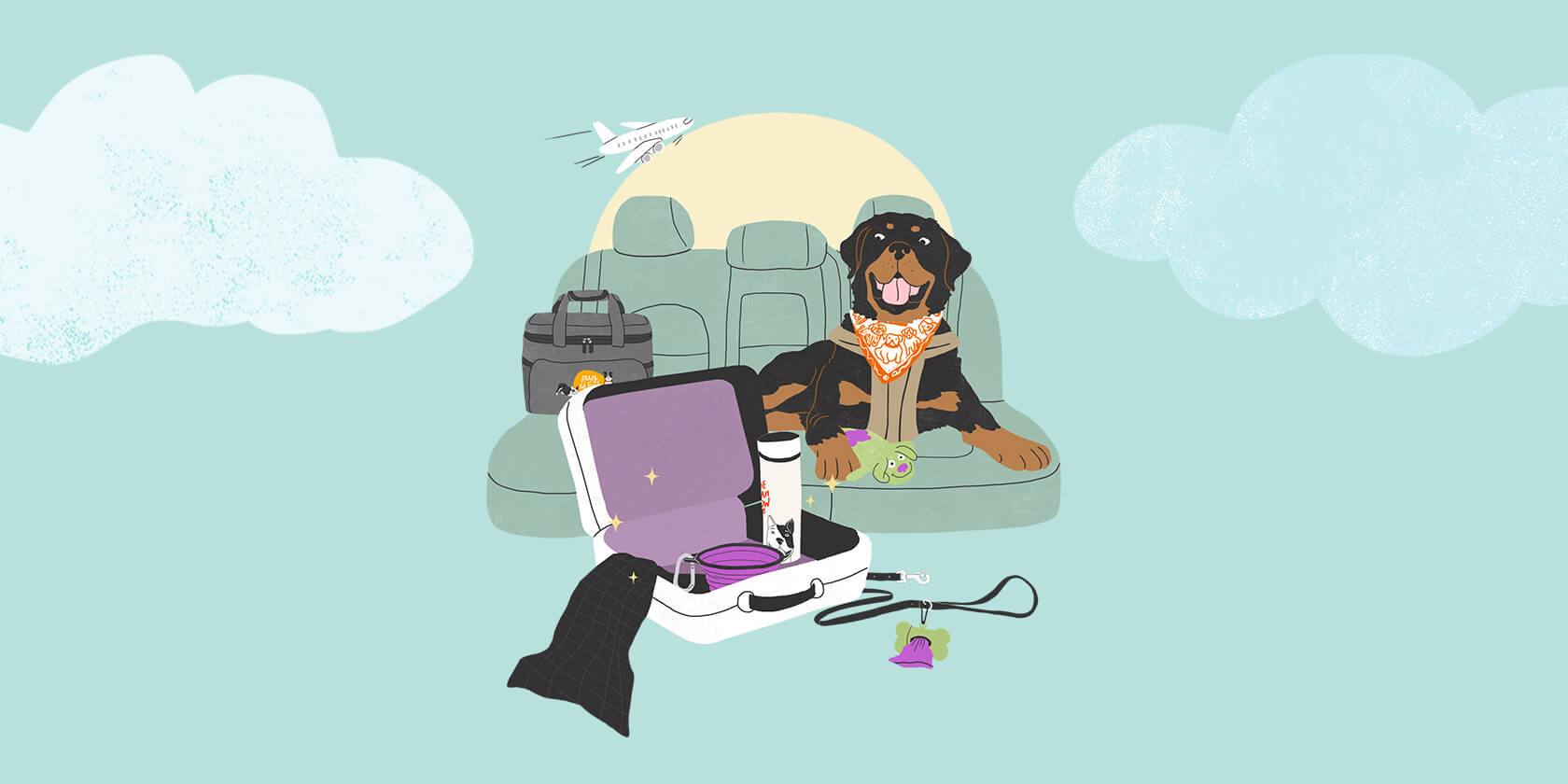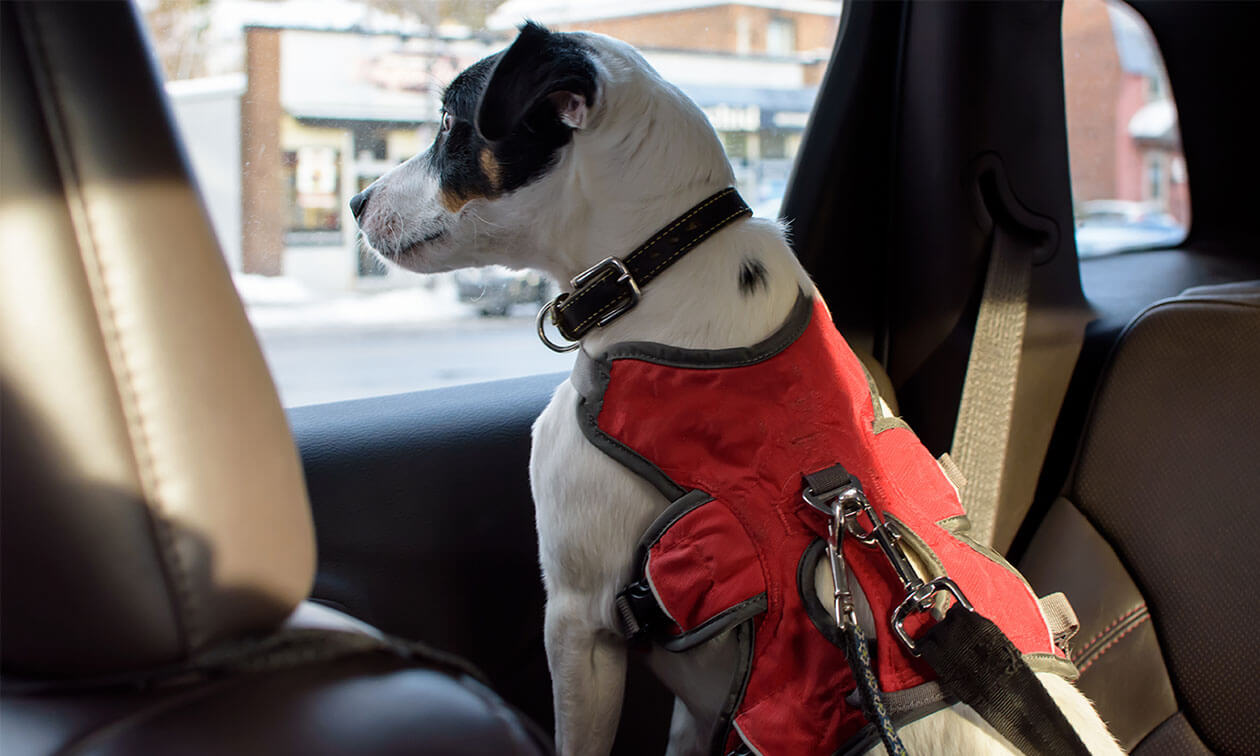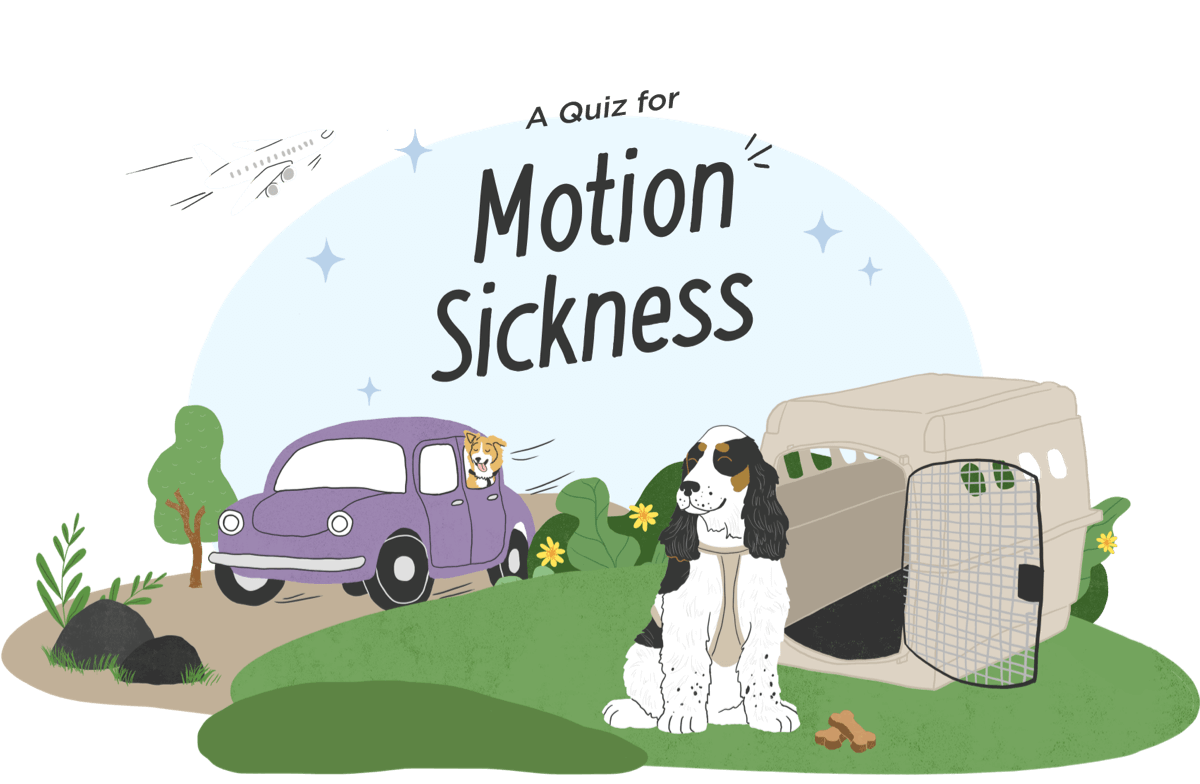Moving across the country is quite an undertaking, especially when you have a dog or cat along for the ride. There are things you can do ahead of time and on the road to make the journey easier.
Update Your Pet’s Information
Ensure that your dog or cat is microchipped, and the contact information is up to date. Provide the microchip company with your cell phone number, an emergency contact, and your new address. Ensure you have a current I.D. tag on your dog’s or cat’s collar and that your pet is wearing their collar during the entirety of your move.
Determine if a Domestic Health Certificate Is Required
Visit the USDA APHIS Pet Travel website to find information on requirements for interstate pet transport. Some states have specific requirements for importing your pet, including specific vaccination and/or microchipping requirements and an official domestic health certificate (also called a Certificate of Veterinary Inspection or CVI). Not all veterinarians can issue a CVI as it requires special USDA Accreditation, so check with your pet’s veterinarian in advance.
Make a Pre-Move Veterinary Appointment
Schedule a veterinary exam for your cat or dog before your move, and find out if your veterinarian can complete a CVI if needed. During this appointment, make sure your pet is current on all required vaccinations for the area you are moving to and discuss with your veterinarian what additional vaccines may be recommended. Ask your veterinarian for physical and electronic copies of your pet's vaccination records and inform them of your moving plans. If a CVI is needed but cannot be provided by your cat’s primary care veterinarian, ask them for suggestions of accredited veterinarians in the area who can provide domestic travel health certificates.
If your pet has any medical conditions, consult with your veterinarian about potential issues that may arise on the road or precautions you should take. If they take prescription medication, make sure to have enough on hand to last through your move and some extra until you establish a relationship with a veterinarian near your new home.
You may want to discuss medications for calming your pet as well as medications for motion sickness. Many pets do fine for several hours, but days of travel may make them sick.
Map Out Your Route
If you are driving, plan out the route you’ll be taking and make a note of where emergency veterinary clinics are located along the way. Check with your lodging accommodations to ensure they allow pets and what they require regarding proof of vaccination or other pet rules.
Pack a Travel Bag for Your Pet
Gather everything your dog or cat will need during your move, and keep it all together in a travel pack. This bag should include their food, a supply of fresh water, bowls, medications, a couple of toys, extra leashes, potty bags or travel litter box supplies, and bedding.
Help Your Pet Acclimate to Their Carrier or Crate
Whether your pet is flying or riding in the car, it’s important to help them feel comfortable in a crate or carrier. For cats, you’ll want to introduce the carrier in your home a few weeks before your trip, and use a cat calming pheromone in the carrier. For dogs, start crate training as soon as possible (if they aren’t already crate trained).
Look Into Long-Distance Pet Transport Services
If you prefer that your pet not fly and you cannot drive them yourself during the move, there are services available for long-distance pet transportation. These services provide different types of pet relocation support, from helping you book chartered flights for pets to private door-to-door car transport. If you have multiple pets, these services may be more affordable than purchasing flights to move your dogs or cats across the country. To minimize risk to all traveling pets, some pet transport services also require a Certificate of Veterinary Inspection for each pet being transported.
Keep a Routine
Both dogs and cats thrive when they have a daily routine. While moving is inherently stressful, staying as close as you can to regular activities will help them through the process. Strive to keep feeding times consistent with what they are used to and provide your dog with regular walks and potty breaks throughout the drive so they can stretch their legs. Take some time during each day to stop and play with your pet to alleviate stress and anxiety.
Tips for Flying with Your Cat
- Check ahead of time with your airline about their rules for flying with a cat in the plane’s cabin.
- Measure your cat’s carrier to ensure it will fit under the seat. While going through security, you’ll need to carry your cat.
- Having them wear a harness and leash attached is best to keep them secure.
- It’s a good idea to have pee pads in the carrier in case of an accident while on the plane. If they’ll be in the carrier for more than 8 hours, you might want to bring a larger, fabric, pop-up kennel for layovers so they have a larger space that can hold food, water, and a small litter box.
Tips for Flying with Your Dog
- Depending on the size of your dog, you may be able to fly with them in a carrier in the plane’s cabin. Check with your airline to see if this is an option and what carrier sizes are allowed. Some dogs are too large to fly in the cabin and must be flown in the cargo hold. While many pets are successfully transported this way every year, there are reports of animals being injured, dying, or becoming lost. Some breeds of dogs, such as flat-faced (“brachycephalic”) dogs, like Pugs and French Bulldogs, should never fly in a plane’s cargo hold. They are at higher risk of heart issues, breathing problems, and heatstroke. Opt for driving your dog or finding a long-distance pet transport service if your dog is at risk or you are uncomfortable with them flying in cargo.

Tips for Driving with Your Dog
- The safest place for a dog in the car is a crash-tested crate, but sometimes this isn’t an option depending on the size of your car. Invest in a quality dog seatbelt and harness if not using a crate. This way, your dog will be safer if there is an accident and won’t be able to dash out an open car door at rest stops. It also prevents them from becoming a distraction while you’re driving.
Tips for Driving with Your Cat
- Your cat should also be in a crash-tested crate. Since cats don’t get walks and potty breaks, it’s best to travel with the largest crate you can fit in your car. You’ll need room for food, water, and a small litter box. It’s also good to have a cat cave where they can cozy up and hide if nervous.
- Just as you did to get your cat comfortable in the carrier/crate in your home, you’ll need to go through the same very slow desensitization process to get them comfortable in the car. Start by taking them outside the home in their crate, then going to the car, sitting in the car, starting the car, short trips, longer trips, and so on, rewarding throughout and being careful never to push past your cat’s comfort level. You always want to end a session before they get nervous or scared.
- Plan ahead for overnight stays. It’s best not to let your cat loose in a hotel room as there may be potential safety hazards for them. Also, they could damage hotel property by scratching or urinating in the room since they’re not used to the environment. Your cat might also get out of the room if hotel staff enters in your absence and they’re not safely confined. Pack a larger, collapsible kennel your cat can hang out in at the hotel. Some hotels have requirements that pets not be left unattended in rooms, so plan accordingly.
- Keep in mind, cats often won’t eat, drink, or eliminate when scared. So, don’t panic if they avoid food, water, and the litter box for a day. However, anything beyond 24 hours is a concern, and you should call your veterinarian or a nearby veterinary or E.R. clinic.
ZPC-01624R1



